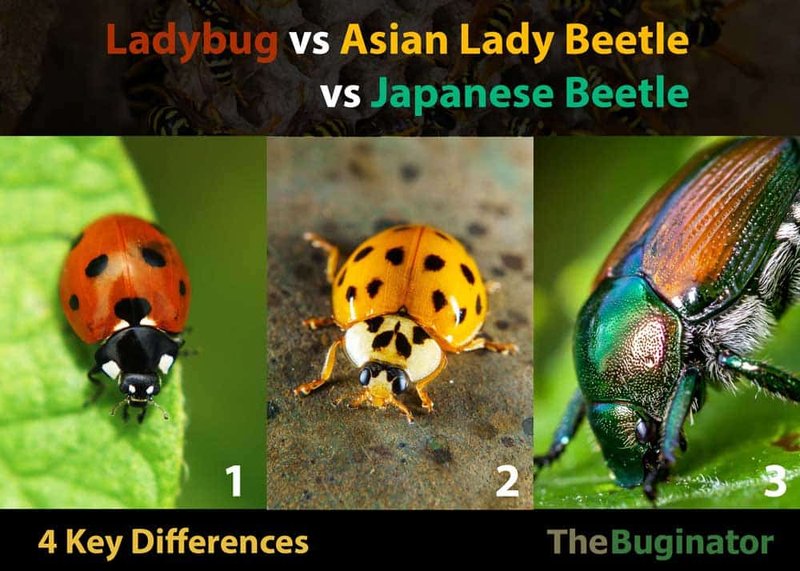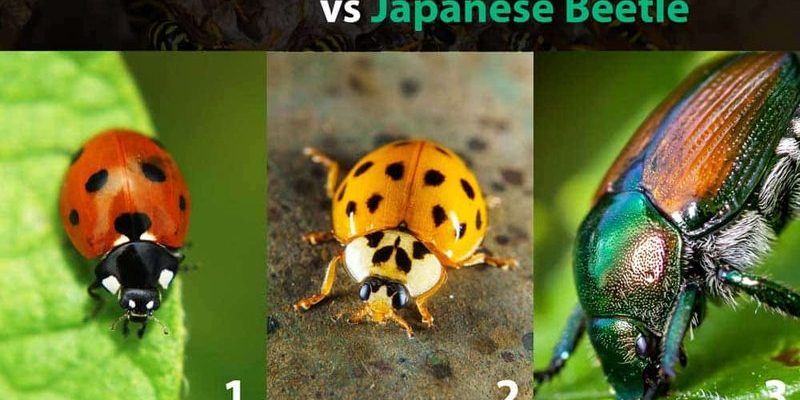
Exploring the world of ladybugs and their insect companions can be a fun journey. Imagine trying to find the differences in flavor between apples and oranges. Both have their unique tastes, but they belong to different families. Similarly, ladybugs may seem like just another bug, but they each have their distinct characteristics and roles. Let’s dive into the exciting world of ladybugs and compare them with a few similar insects!
What Are Ladybugs?
Ladybugs, or ladybird beetles, are part of the Coccinellidae family. They’re easily recognizable by their round bodies and colorful markings, usually red or orange with black spots. But what you might not know is that there are over 5,000 species of ladybugs worldwide! These little insects are more than just a pretty face; they’re vital for agriculture as they naturally control pests like aphids.
The life cycle of a ladybug is pretty fascinating too. It starts as an egg, hatches into a larva, then pupates before becoming an adult ladybug. If you’ve ever seen a ladybug larva, you might have thought it was a little monster—spiky and much less cute than its adult form! These larvae are actually voracious predators, munching away on aphids and helping keep plants healthy.
You might be wondering, why should we care about ladybugs? Well, aside from their role in pest control, they also symbolize good luck in many cultures. It’s said that if a ladybug lands on you, good fortune is on its way!
Ladybug vs. Asian Lady Beetle
Let’s talk about one of the main contenders: the Asian lady beetle. At first glance, they look quite similar to ladybugs, but there are key differences. The Asian lady beetle often has a wider range of colors, including yellow, orange, and even black, and can have more varied markings—some even lack spots altogether!
Another noticeable difference is their behavior. While ladybugs tend to be friendly garden helpers, Asian lady beetles can sometimes be a nuisance. They like to invade homes in the fall, seeking warmth, and can leave behind a smelly residue if threatened. Not exactly the welcome party you’d expect, right?
In terms of usefulness, both insects are beneficial. Yet, due to their behavior, you might want to think twice before inviting Asian lady beetles into your home. It’s like choosing between a charming guest and an overly enthusiastic party crasher!
Identifying Ladybugs and Their Lookalikes
One of the biggest challenges in differentiating between ladybugs and their similar insects is knowing what to look for. Here are a few tips to help you out:
- Color Patterns: Look for the specific color and number of spots on their backs. True ladybugs usually have a more limited color palette.
- Body Shape: Additionally, ladybugs tend to have a more rounded shape, while Asian lady beetles may have a more oval and flatter body.
- Behavior: Observe their behavior! If you see them hanging out on plants, that’s a good sign they’re helping out!
Understanding these differences can not only help you appreciate ladybugs more but can also aid in pest management for your garden. Being able to identify these bugs means you can actively support the right ones!
Other Similar Beetles: The Common Ladybird
You might have heard of the common ladybird, which is often mistakenly referred to as a ladybug. This name can cause some confusion, but it’s just one of the many species in the ladybug family. The common ladybird is similar in appearance, but it is native to the UK and has different markings compared to the North American ladybug.
Here’s the twist: The common ladybird has a broader range of colors and shapes. They can appear orange, black, or even yellow, and possess different spot patterns that help distinguish them from their North American cousins.
So, why does this matter? If you’re ever in the UK and identify a common ladybird, you’ll likely discover that it has its own peculiarities and charm. Just like people, these insects have their own unique traits to offer!
The Role of Ladybugs in the Ecosystem
Ladybugs play an essential role in the ecosystem. As natural predators, they help control pest populations, especially aphids, which can cause major damage to crops. By keeping these pests in check, ladybugs contribute to healthy soil and plant life, which ultimately supports our food systems.
Here’s the kicker: a single ladybug can consume up to 50 aphids a day! That’s a lot of munching for such a small creature. This impressive appetite not only keeps your garden thriving but also reduces the need for chemical pesticides, which can harm other beneficial insects.
If you want to attract ladybugs to your garden, consider planting flowers like marigolds or daisies. These plants not only brighten up your garden but also provide shelter and food for ladybugs, creating a welcoming environment for them.
Why Knowing the Differences Matters
You might be wondering why it’s important to know the differences between ladybugs and their similar insects. Well, understanding these distinctions can help you become a better gardener or environmental steward.
If you can identify ladybugs and their lookalikes, you can encourage the right insects in your garden. This knowledge helps maintain a balanced ecosystem, promoting biodiversity while minimizing the use of harmful chemicals. Plus, who wouldn’t want to invite more ladybugs to their yard?
Additionally, knowing which insects help and which can become pests can save you time, money, and frustration. Instead of finding yourself overwhelmed with aphids, you can happily encourage your ladybug friends to aid in pest control.
In summary, ladybugs are not just cute insects; they play a significant role in our environment and gardens. By comparing them with similar insects, we can better appreciate their unique qualities and contributions. Whether you spot a classic ladybug, an Asian lady beetle, or a common ladybird, each of them has their story to tell and function to fulfill in the ecosystem.
So the next time you see a ladybug, take a moment to admire it! It’s not just another bug; it’s a tiny hero of the garden, working tirelessly to keep pests at bay. Now that you know a bit more about ladybugs and their insect relatives, you can confidently share your newfound knowledge with others—over coffee, perhaps? Here’s to all the little creatures that make our world a beautiful place!

